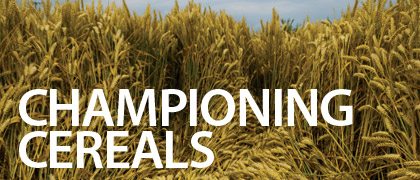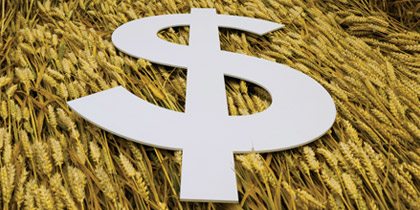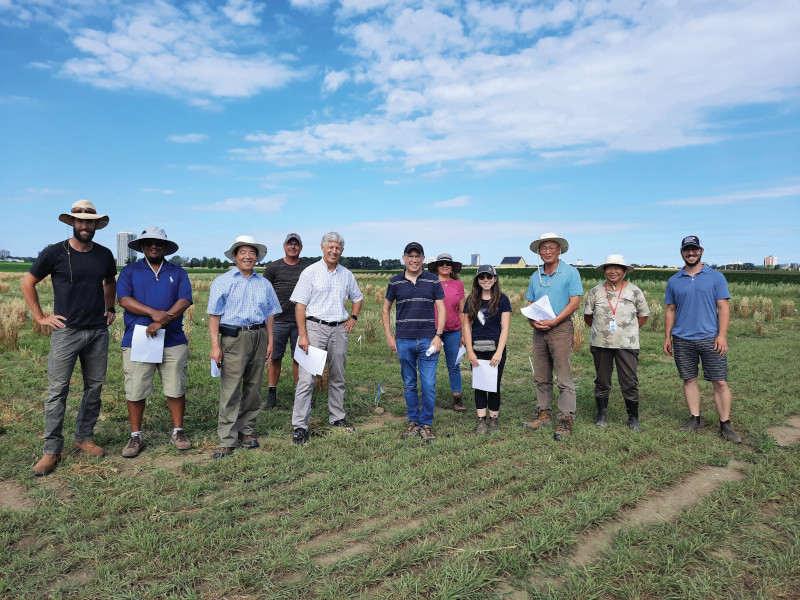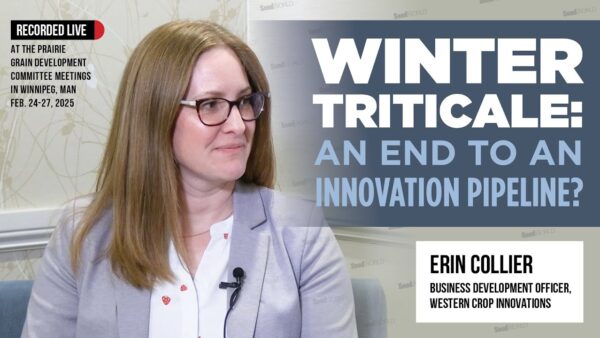
New investment model seeks to increase innovation.
A new model is under discussion by Canada’s cereals sector. The intention: to significantly increase investment for wheat and barley varietal development, allowing these crop to compete with crops, such as pulses, canola and other oilseeds.
“There’s a great deal of interest in wheat and cereals breeding,” says Tom Steve, Alberta Wheat Commission general manager. “We have a general consensus more investment is needed but there are also questions that must be answered. To what extent should producers invest? To what extent should the public sector invest? And to what extent should private companies invest?”
Cereals have traditionally been one of agriculture’s cornerstones in Canada; however, during the past 20 years, the number of acres seeded for barley and wheat have decreased, despite yield increases of about 32 per cent and 45 per cent, respectively.
Other crops have simply out-competed the cereals sector with respect to on-farm yields and the value received. This has led to the creation of a cereals consortium, if you will, that is working to increase investment and innovation in wheat and barley varietal development.
“There is a strong recognition of the need for increased investment and innovation in cereals, and a desire by Agriculture and Agri-Food Canada to move out of variety finishing and registration,” says Stuart Garven of the Saskatoon-based Garven & Associates. A private management consultant that specializes in agriculture, Garven who was commissioned by the consortium to develop a conceptual model says many producers want to play a strategic role in cereal innovation while creating an attractive business environment for the private sector.
The consortium, which was organized by the Alberta Seed Growers’ Association, is comprised of 13 organizations, including the Alberta Barley Commission, Alberta Wheat Commission, Grain Growers of Canada, Keystone Agricultural Producers, Manitoba Seed Growers Association, Saskatchewan Seed Growers Association, Western Barley Growers Association, Western Canadian Wheat Growers and the Western Grains Research Foundation.
The consortium first presented this conceptual model at the Breadbasket 2.0 Summit in 2013. At that time — after fundamental changes in the cereal industry — the Manitoba Wheat and Barley Growers Association, Saskatchewan Barley Commission and the Saskatchewan Wheat Commission were just under development, explains Garven.
These producer groups, which have the authority to collect a check-off and the means to invest in research and varietal development, have since joined the consortium and are currently discussing and evaluating the proposed model. Garven says during the next several months, these groups will begin to fully understand the model and decide how producers should be involved in the future.
It’s not that Canadian growers haven’t been investing. In fact, growers have been investing in wheat and barley variety development for nearly 20 years through the Western Grains Research Foundation — to the tune of $60 million.
Growers are an important component of the model because they have the means to invest, and the research that’s done ultimately benefits them, Garven says. “This is a very hot topic among the commissions, right now,” he says. “The model, which is still conceptual, is something that the grower groups can shape to their own sense of needs and priorities.”
Garven expects that it will take two to three years to work through and implement any model of this scale.
In working toward developing this conceptual model, which Garven likes to call a “producer partnership model,” he studied cereal-breeding systems around the world, interviewed many representatives from seed companies and government officials. Additionally the consortium provided input on what it wanted and didn’t want to see in a new model.
“As more and more people look at the model and provide input, it will likely change and evolve to meet the needs of a wider group,” Garven says, adding that the next step in the process is to learn what producers want to see from the model and collect their feedback.
The Model
The model calls for an increased investment by producers and increased partnerships between private companies and public entities. “’Partnerships’ is a key word because this type of investment can’t be funded by producers alone,” Garven says.
“It’s designed to allow breeders and the cereal value chain to transition from the current situation to a new model that makes the whole industry stronger,” Garven says.
One of the core components of the model is the establishment of a not-for-profit entity that is producer owned and producer financed. Garven calls this the Grain Investment Corp or GIC, which is a hypothetical name but helps to make an abstract concept more concrete.
This entity, or GIC, would become an agent for AAFC, whereby GIC — alone or in partnership with others — would take on the role of finishing AAFC lines, registering varieties and licensing lines. And GIC varieties would be licensed to existing players in the industry. This assumes continued AAFC funding in germplasm development at the current level with incremental new private sector investment.
Per the proposal, Garven explains that the vision is for GIC to be owned by Canadian producers but open for investment from global breeders and others. “It would likely have a board governance structure made up of producers and industry experts and be run as a business,” he says. “The primary focus of the GIC would be to ensure the continued flow of new and approved AAFC genetics to producers and the cereal value chain.”
Additionally, the GIC would develop the capacity to provide market-based input into germplasm development at AAFC. The GIC would also be tasked with developing partnerships with private and university cereal breeding organizations to facilitate germplasm exchanges, technology licensing and trait integration.
So how might an entity such as the GIC be funded? The proposed model recommends funding this entity through an end-point royalty. Garven explains that this creates a significant and predictable funding pool in a fair and cost-effective way. He anticipates that it would likely double cereal breeding investment with an end-point royalty of $2 to $3 per tonne.
“There are several reason why I recommend using an end-point royalty collection method,” Garven explains. “First, most of the cereal grain is sold through a relatively small number of buyers, and buyers have established the administrative systems for collection and remittance of levies based on grain sales. So this helps to keep administration costs low.
“It’s also more practical to implement than a royalty on farm-saved seed because of the sheer number of farmers and their locations. Based on feedback, it’s less offensive to growers than a collection or monitoring system that would be needed for farm-saved seed. And lastly, it would be a royalty system based on performance, which share the risk between producers and breeders.”
Devil in the Details
Garven highlights a few features that would help to facilitate the success of the producer partnership model. Of those is the ratification of the 1991 Convention of the International Union for the Protection of New Varieties of Plants, better known as UPOV 91, which would enable future implementation of end-point royalties.
“The decision to use an end-point royalty or seed royalty would be at the discretion of each breeder. However, under the model, all varieties registered and licensed by the GIC and its partners would have an end-point royalty on the production — as opposed to a royalty on the seed,” he says. “Another feature is that a set percentage of the end-point royalties collected on GIC- and partner-developed lines and varieties would be reinvested into long-term public/private collaborative strategic research efforts.
“The remaining funds collected from the end-point royalty would be reinvested by GIC in variety development and provide financial and human resource support to AAFC’s strategic long-term germplasm development.”
Garven says that when partnerships are established with private breeders or universities to develop varieties from AAFC lines, the model would share the end-point royalty with the partner to recognize each partner’s contribution to the variety. He says that the actual end-point royalties and the percent allocations given to partners would be defined in an agreement between the GIC and partnering breeders.
Early Days
“Cereals have an important role in crop rotations,” Garven says. “They’re important for improving soil fertility and help to fend off pests and diseases when incorporated as part of an integrated pest management program.” He says improved varieties and access to new genetics will allow growers to grow the best crop possible — and not just in cereals.
While there’s much work to be done to bring such a model to life, success hinges on two key elements — a change in the mindset of growers and a paradigm shift of private breeding companies. “Growers need to be willing to pay more for genetics through an end-point royalty on cereal grain production, and private companies need to be willing to partners with customers to create maximum value and capture all opportunities, Garven says.
Alberta Wheat’s Steve reminds that there are a number of models that are being promoted as a way to increase investment and that Garven’s model is one of a number. “It’s early days,” Steve says. “This is a complex issue and we are just in the beginning of some very vigorous discussions. Right now, there’s no industry consensus. This issue will only intensify in the coming months and years because we all want to increase investment in wheat breeding, but how and what form that takes is to be determined.”
Julie Deering
Model PrinciplesIn working toward developing a new model to meet the needs of the cereal sector, guiding principles were established. The model will: 1. Operate as a business. 2. Allow two systems to coexist (private breeding programs and private-producer partnerships), which will create more varieties, more choice and increased competition, leading to more innovation. 3. Increase investments in variety and germplasm development. 4. Provide a method of funds to ensure that adapted germplasm continues to be enhanced and made available for game-changing technology as and when it’s available. 5. Contribute to an improved method of addressing the need to collect royalties from farm-saved seed to capture a return on these added investments. 6. Strengthen the environment for a return on investment to cereal breeding research. The model will not: 1. Get in other peoples’ businesses. 2. Prevent private company breeders from accessing early stage germplasm from AAFC. 3. Reinvent the current system but instead lay an acceptable path for transition to private breeding in Canada that allows a role for growers. 4. Control where others collect royalty on seed or grain and how much is charged. 5. Change the Seed Act. The new model shall maintain the integrity of the pedigreed seed system. |














